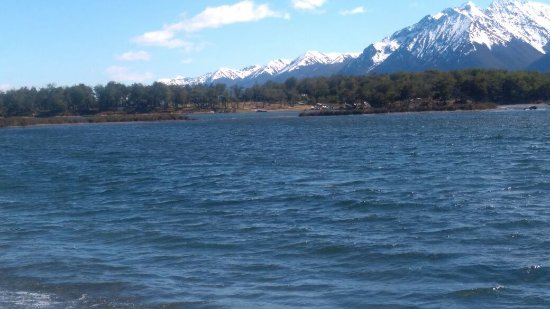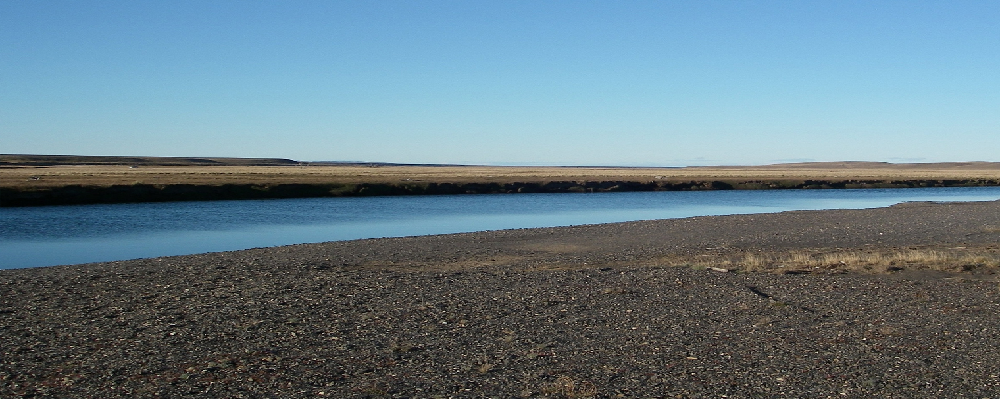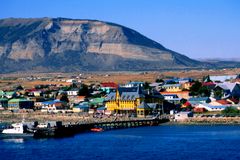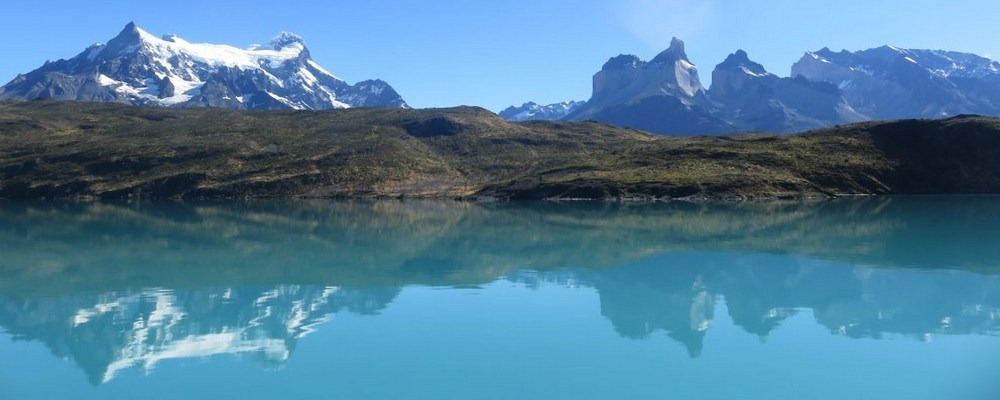Cycling south Patagonia, from Ushuaia to Torres del Paine was a grueling route of nearly a thousand kilometers. You won’t see many people in this desolate landscape…
Like straight out of a fairty tale, Patagonia with its wild and rugged landscape, has long stirred in the imagination of travellers. Covering the southern most tip of South America, it stretches over both Chile and Argentina.
There is the most stark difference in landscape, as you traverse the two countries. Chile, with its jagged rocks formed in the last ice age, making the for some really undulating riding. Whereas the other side of the border it is much flatter and windswept lands on the Argentinian side.
Cycling South Patagonia – Route To take?
The major routes highways of the Chile’s Carretera Austral and Argentina’s Ruta 40, have ended by the time you get to Torres Del Paine. You’ll need to take the roads 9 and 3, which will take you all the way up to Torres del Paine. The further south you are, the stronger you’ll be blasted by the elements, its not called the Tierra del Fuego (land of fire) for nothing!
Getting away to cycle to the end of the world and cruise the wilderness of Patagonia, is something I’ve always wanted to do. I had heard of the bitter cold and famous severe winds that batter the region, but it was the complete solitude which attracted me to take this on. The route took me from Ushuaia (the southernmost town in the world) to Torres del Paine, home to stunning glaciers and wild horses.
Having done plenty of cycling before, I considered myself in generally good shape. However the harsh environment of Patagonia is certainly a far cry from the quiet roads of Oxford, England. Have a read on how I got on cycling south Patagonia.
Important things to know:
- When is the best time to do it? It’s best to cycle from December to February, the warmest and driest months. You also get the benefit of the longer nights.
- How long does it take? It takes ten to fourteen days, depending on conditions and fitness.
- How far is it? It’s 840 kilometers, I averaged 70 km a day.
- What should I bring? Even though the ride was done during the summer, it was still really cold. You should bring a tent, stove, warm clothing, gloves are a must, and something to protect your face from the harsh winds. A puncture repair kit is also essential as the solitude makes it difficult to find any repair shops along the way.
- What bike did I use? I used the Surly Bridge Club bike which has great suspension and provides the run racks to attach lots of equipment. Make sure you have back up equipment, in case of emergencies.
- How much training will I need? Depending on your base line fitness, you will need to do at least three months training for something like this. Training schedules for long bike rides are readily available.
Camping in Patagonia

Lakes are common in Patagonia
The insane scenery throughout the trip, made the camping incredible. Towards the end of the trip, I was able to find more hotels to stay in, as towns became more frequent. For the first few nights of the trip, it was really chilly and strong winds battered the tent throughout the night. It really felt like camping on the edge, yet if you come prepared it is for sure manageable.
Going in December meant temperatures were regularly in the low twenties around Torres Del Paine and in the mid teens down the bottom. However the weather was changeable, and you should expect all types of weather, for sure doing it in December meant for more favourable weather.
Day 1
Looking out over the freezing waters of the Beagle Channel, is the southernmost city of Ushuaia. The trip officially started as I headed out of Ushuaia by taking Route 3. An extremely hard first day with an uphill climb of 400 meters elevation. The conditions were terrible, and hardly being able to see anything through the rain and wind was really challenging. It was supposed to be summer!

The snow capped mountains behind Lake Fagnano – slept in an abandoned cabin beside the water
Day 2 – The Ride down to Rio Grande
Cycling in south Patagonia the landscape is generally a lot flatter. The vast scenery opens up, with only sparsely covered scrub land throughout. With the absence of tree cover to protect myself from the strong winds, it was an insanely long night in the tent.
Here is a good place to make any necessary purchases as there is a well-stocked Mini Mart to get all your essentials.

Experiencing solitude and peacefulness on the vast plains, that run near the ocean
Day 3 – San Sebastián
After waking up early, I made my way along the coast. The ride was flat but the winds were so intense. Gloves are so important, people! Peering out over the plains on one side and the sea on the other, gave the impression that the world was actually flat; the horizons really do feel like they go on forever here.
These early days of the trip, is a real test of will and skill. The distances are substantial between towns, and remoteness makes the supplies and services a lot more expensive.
Day 5 – Punto Esposa
Having crossed into Chile, it was an easier day cycling which meant the body could recuperate. Punto Esposa is the main spot to take the boat from. Once over the river, I stayed in Chile and started to head east towards San Gregario. For the next 100 kilometers, there was nothing. This meant roughing it for a few days and conserving what water I had. The landscape all looked very flat and became monotonous, leading me to enter a trance like state as I cycled along.
Day 8 Punto Arenas
After a 4 hour ferry ride from Porvenir, you arrive at the port of Punta Arenas. Before the days of the Panama canal, this was a major stop-off point. This is reflected in the stately homes which are a common site in the town. Also for anyone visiting Antarctica, this is where they would come to set off.
Torres Del Paine is a further 300 kilometers down the road 7, this is where the terrain will become more challenging as we enter the beginning of the Andes mountain range.
Day 10 – Laguna Cabeza del Mar
Arriving at the Laguna Cabeza del Mar, it’s striking how many lakes you come across. It is absolutely freezing and am looking forward to getting into some civilization. Everywhere is so quiet!

You can catch a ferry from Puerto Natales across the Chilean fjords
Day 11 – Puerto Natales
Everything is looking a lot more green now and with the temperature increasing, it is becoming pleasanter to ride. I ran into a couple of wild horses and even llamas which were patrolling the countryside. The town has become a tourist hotspot, as visitors of amazing restaurants and nice hotels along the pretty waterfront.
Day 14 – Torres del Paine
With only 40 kilometers left of route 9, it was the final stretch. With the Torres del Paine national park in the distance famous for its beautiful ”cerros” (hills) , a wave of relief rushed over me. This scenery was the most impressive of the whole trip. The only downside of this final part is that there is a gradual incline which, especially after all the previous days activities, becomes very strenuous.
Once you arrive in Torres del Paine, you will encounter loads of tourists. The town is small but has ample amounts of hotels and supermarkets. Heading east is the national park, where there are stunning glaciers which protrude into shimmering glacial lakes. As soon as I arrived, I went out horse-riding on the Gauchos (the horses endemic to the region). There is also an eight day trek which winds its way through the Torres del Paine with Refugios (hotels) along the way where you can eat and sleep.

Torres del Paine has a myriad of beautiful lakes, glaciers and mountains

